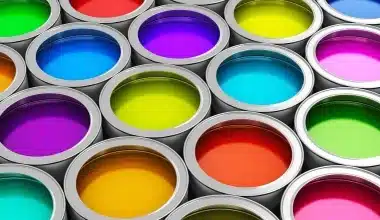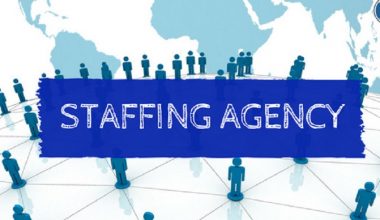Consuming enormous amounts of data isn’t always easy. Data sets can be so enormous that it’s nearly hard to extract anything valuable from them. This is where data visualizations come into play. Creating data visualizations is rarely simple. It’s not as if designers can simply start from scratch with a data set containing thousands of entries. Sure, it’s conceivable, but who wants to waste dozens or hundreds of hours doodling on a scatter chart? This is where data visualization tools come into play. In this post, we will look at the finest free Open Source Data Visualization Software as well as the features of Tableau.
What Is Data Visualization Software?
Data visualization software makes it easier for data visualization designers to generate visual representations of big data sets. When dealing with data sets containing hundreds of thousands or millions of data points, automating the process of constructing a visualization, at least in part, considerably simplifies the designer’s task.
These data visualizations can then be utilized for a variety of purposes, including dashboards, annual reports, sales and marketing materials, investor presentation decks, and nearly any other situation where information must be digested quickly.
What Characteristics Do the Best Data Visualization Software Share?
The greatest data visualization software on the market shares a few characteristics. The first advantage is their ease of usage. There are several quite complex data visualization software available. Some include good documentation and tutorials and are constructed in user-friendly ways. Others, regardless of their other qualities, are missing in certain areas, excluding them from any list of “best” tools.
The greatest tools can also deal with large amounts of data. The best can manage many data sets in a single graphic.
The better software can also generate a variety of chart, graph, and map types. The majority of the programs listed below can generate both images and interactive graphs. However, there are several exceptions to the wide range of output criteria. Some data visualization software focuses on a single style of chart or map and excels at it.
Finally, there are financial concerns. While a larger price tag does not inherently disqualify a tool, it must be justified in terms of greater support, features, and overall value.
Best Data Visualization Software
There are numerous options for data visualization software, and we’ve done the research to identify which is ideal for small organizations. These tools should be versatile, simple to use, and allow you to visualize data in a variety of ways to meet the demands of your organization.
#1. Tableau
Tableau, one of the most extensively used data visualization software, provides interactive visualization solutions to over 57,000 businesses.
Also, Tableau effectively creates visuals and graphics from enormous, constantly-evolving datasets used for artificial intelligence, machine learning, and Big Data applications by integrating with advanced databases such as Teradata, SAP, My SQL, Amazon AWS, and Hadoop.
#2. Dundas BI
Dundas BI provides highly customizable data visualizations such as interactive scorecards, maps, gauges, and charts, making it easier to create ad hoc, multi-page reports. Also, Dundas BI streamlines the complicated procedure of cleansing, examining, manipulating, and modeling large datasets by giving users complete control over visual elements.
#3. JupyteR
JupyteR, a web-based tool, is one of the best-rated data visualization software packages, allowing users to create and share documents with visuals, equations, narrative prose, and live code. Also, JupyteR is an excellent choice for data cleansing and transformation, statistical modeling, numerical simulation, interactive computing, and machine learning.
#4. Zoho Reports
Zoho Reports, formerly Zoho Analytics, is a comprehensive data visualization software that merges Business Intelligence with online reporting services, allowing for the rapid production and distribution of substantial reports in minutes. The high-quality visualization tool also enables Big Data ingestion from various databases and apps.
#5. Google Charts
Google Charts, one of the leading participants in the data visualization market, is well-known for its capacity to make graphical and pictorial data representations. It is coded with SVG and HTML5. Google Charts supports Zoom, and it has unrivaled cross-platform compatibility with iOS, Android, and even older versions of the Internet Explorer browser.
#6. Visual.ly
Visual.ly is one of the top data visualization tools on the market, and it’s well-known for its excellent distribution network, which shows project outcomes. Furthermore, Visual.ly accelerates the process of data import and outsourcing, even to other parties, by employing a dedicated creative team for data visualization services.
#7. RAW
RAW, also known as RawGraphs, works with delimited data in the form of a TSV or CSV file. It bridges the gap between data visualization and spreadsheets. RawGraphs a web-based tool, provides excellent data security with a variety of non-traditional and standard layouts.
#8. IBM Watson
This high-quality data visualization software, named after IBM founder Thomas J. Watson, employs analytical components and artificial intelligence to find insights and patterns in both unstructured and organized data. IBM Watson’s intelligent, self-service visualization tool helps customers through the whole insight discovery process by leveraging NLP (Natural Language Processing).
#9. Sisense
Sisense, one of the most agile data visualization technologies, provides customers with rapid data insights everywhere, at any time. To assist decision-makers in making data-driven decisions, the best-in-class visualization tool can detect critical data patterns and summarize statistics.
#10. Plotly
Plotly, an open-source data visualization tool, provides full interaction with analytics-focused programming languages such as Matlab, Python, and R, allowing for elaborate visualizations. Also, Plotly, which is widely used for collaborative work, distributing, altering, producing, and sharing interactive, graphical data, supports both on-premise and cloud deployment.
Open Source Data Visualization Software
When looking for the best open-source data visualization software tools, you should be aware that many of them go well beyond dashboard platforms and libraries for making graphs and charts. Many free and open-source interactive big data visualization tools are available today, allowing you to undertake data analysis to uncover patterns and trends.
They are strong visual analytics software with 3D data visualization, BI (Business Intelligence) tools, and social network visualization.
We compiled a list of the finest open-source data visualization software (usually used with Javascript, Java, or Python). Some are robust data analysis and visualization software, while others are merely charting libraries.
#1. Gephi
Gephi is one of the best open-source and free visualization and exploration software applications for graphs and charts. Also, Gephi is an excellent tool for individuals who want to learn how to read graphs and utilize them for basic data analysis. You can change the structures and colors of the representations to reveal interesting hidden patterns.
#2. ParaView
ParaView is an open-source data visualization application that may be used on multiple platforms. It is one of the most powerful open-source visual analytics apps.
It is designed to evaluate massive datasets. Also, it can, however, be utilized for smaller data sets. Because of its high-performance computation, the platform is used by numerous national laboratories, colleges, and corporations.
#3. Orange
Orange is more than just an open-source data visualization tool. It is one of the greatest open-source and free machine-learning tools for statistical and data analysis purposes.
It is a Python-based utility suitable for both beginners and specialists. Also, it enables you to perform basic data analysis and data visualization. You can look at statistical distributions and scatter plots, or you can go deeper and look at decision tree examples, Venn diagram examples, heatmaps, linear regression examples, solutions, and so on.
#4. Chart.js
ChartJS is an excellent tool for little projects. It is a straightforward yet highly adaptable JavaScript charting tool for designers and developers. The tool gives you excellent flat templates for responsive charts by default. Chart.js works with ES6 modules, JavaScript, and module loaders.
#5. Plotly
This cutting-edge solution includes some of the best open-source and free graphing software tools for creating, altering, and sharing interactive data visualizations over the Internet.
Plotely provides attractive, interactive web-based graphs and charts. In reality, Plotly is one of the surprisingly good big data tools for visually appealing and appealing data presentation.
Data Visualization Software Tableau
Tableau is a data visualization software that enables users to create interactive and visually appealing data visualizations, dashboards, and reports. It is used by corporations, organizations, and individuals across numerous industries to help people see and comprehend their data.
Also, Tableau provides a drag-and-drop interface that allows users to build visualizations without extensive coding or programming knowledge. It may connect to several data sources at the same time and supports a variety of data sources such as spreadsheets, databases, cloud services, and web applications.
Tableau’s primary features include the following:
- Interactive Dashboards: Tableau allows users to create interactive dashboards that can be customized to display relevant data in real time. Users can filter, sort, and drill down into their data to gain insights.
- Data Blending: Tableau allows users to blend data from multiple sources, creating a single view of their data.
- Mapping: Tableau supports mapping and geospatial analysis, allowing users to create maps and visualize data by location.
- Collaboration: Tableau allows users to share their visualizations with others, collaborate on dashboards, and publish reports to the web or mobile devices.
- Data Analytics: Tableau provides various analytical tools, including statistical analysis, forecasting, and trend analysis, allowing users to gain deeper insights into their data.
Tableau’s software is available in desktop and web-based versions, as well as mobile apps for iOS and Android smartphones. It is used to analyze and visualize data in a variety of areas, including banking, healthcare, retail, and education, by enterprises, government agencies, and non-profit groups.
Is Excel a Data Visualization Software?
Excel is a spreadsheet program that can be used for data visualization, but it was not built with that purpose in mind. Excel has several basic charting and graphing tools that enable users to generate simple visualizations and reports such as bar charts, line graphs, and pie charts.
What Is the Purpose of Data Visualization Software?
The goal of data visualization software is to assist users in transforming complex data sets into visually appealing representations that are simple to grasp and evaluate. Users can utilize data visualization tools to build dynamic and aesthetically appealing charts, graphs, maps, and other representations to acquire insights and make educated decisions.
Is Spss a Data Visualization Tool?
SPSS (Statistical Package for the Social Sciences) is largely used for statistical analysis rather than data display. It does, however, include some basic charting and graphing features that allow users to construct rudimentary visualizations such as bar charts, histograms, scatterplots, and pie charts.
Is Python a Data Visualization Tool?
Python is a programming language with many applications, including data visualization. Python includes various libraries that provide a wide range of tools for creating dynamic and visually appealing data visualizations, including Matplotlib, Seaborn, Plotly, Bokeh, and ggplot.
Is SQL a Data Visualization Tool?
No. SQL (Structured Query Language) is not a tool for data visualization. SQL is a programming language that is used to manage and manipulate data in relational databases. It retrieves, inserts, updates, and deletes data from databases.
Which Software Is Best for Data Analysis?
The best data analysis software is determined by the user’s demands and expectations. However, the following are some popular data analysis software packages used by data analysts and scientists:
- Python
- R
- SAS
- SPSS
- Excel
- Tableau
How Do You Visualize Data?
Data visualization entails presenting information in a graphical or pictorial style that is easy to grasp and evaluate. The following are some actions to take when visualizing data:
- Determine the goal.
- Select a suitable visualization.
- Clean and prepare the data
- Create the visualization
- Interpret the visualization
- Share the visualization
What Is Visualization in Python?
The use of the Python programming language and its libraries to create graphical representations of data is referred to as visualization in Python. Python includes various libraries that provide a wide range of tools for creating dynamic and visually appealing data visualizations, including Matplotlib, Seaborn, Plotly, Bokeh, and ggplot.
What Is the Best Type of Data Visualization?
The ideal type of data visualization is determined by the data being shown as well as the aim of the visualization. Different data visualizations are better suited for different types of data and aims. Here are some examples of frequent data visualizations and the conditions in which they are most useful:
- Bar Charts
- Line Charts
- Scatter Plots
- Heatmaps
- Pie Charts
Which Is the Most Common Form of Data Visualization?
The bar chart is the most prevalent type of data visualization. Bar charts are useful for showing data in a variety of sectors and industries because they are basic and easy to understand. They can be simply generated using spreadsheet software such as Microsoft Excel or Google Sheets and are used to compare categorical data or discrete values.
Conclusion
Designers have so many visualization tools at their disposal that it can be difficult to choose which one to employ. Data visualization designers should consider factors such as simplicity of use and if a tool contains the functionality they require.
Choosing the most powerful tool available isn’t always the best idea: learning curves might be steep, necessitating more resources simply to get started, when a simpler tool may be able to create exactly what’s needed in a fraction of the time. However, keep in mind that the tool is only one component of generating a great data visualization; designers must also examine what else goes into making a great data visualization.
Most data visualization software gives free trials (if the complete product isn’t free), so it’s worth your time to try out a couple before settling on one.
- WHAT IS DATA VISUALIZATION: Techniques, Tools, and Importance
- DATA ANALYST TOOLS: 13+ Best Data Analyst Tools 2023
- TOP 20+ DATA ANALYTICS SOFTWARE in 2023
- BUSINESS ANALYTICS TOOLS: What It Is, And All You Need To Know
- CRM Analytics: A Detailed Guide
- SUBSCRIPTION MANAGEMENT APP: Best Apps for Managing Your Subscription






